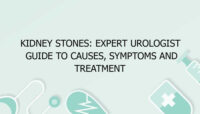Neurological disorders impact millions of individuals worldwide, affecting their nervous system and often leading to significant disruptions in daily life. The nervous system, comprising the brain, spinal cord, and peripheral nerves, controls nearly all bodily functions, and any dysfunction can result in severe physical, cognitive, or emotional challenges. In this article, we delve into the most common neurological disorders list, exploring their symptoms, diagnostic approaches, and available treatment options. This guide is designed to help you better understand these conditions and how they are managed.
What Are Neurological Disorders?
Neurological disorders are conditions that affect the nervous system. They can arise due to genetic factors, infections, trauma, lifestyle choices, or unknown causes. While some are acute and treatable, others are chronic and may require lifelong management. The most common neurological disorders list includes conditions such as Alzheimer’s disease, Parkinson’s disease, epilepsy, migraines, and multiple sclerosis.
Symptoms of Common Neurological Disorders
Symptoms of neurological disorders vary widely depending on the specific condition and its severity. Common signs to look out for include:
- Memory Loss and Cognitive Decline: Often associated with disorders like Alzheimer’s disease and dementia.
- Tremors and Movement Issues: Seen in Parkinson’s disease and essential tremor.
- Seizures: A hallmark of epilepsy.
- Chronic Pain or Tingling: Common in peripheral neuropathy and multiple sclerosis.
- Headaches: Persistent and severe migraines fall under this category.
- Muscle Weakness or Paralysis: Observed in conditions like amyotrophic lateral sclerosis (ALS).
- Speech and Vision Problems: Symptoms that can occur in strokes or brain tumors.
Diagnosis of Neurological Disorders
Accurate diagnosis is essential for effective treatment. Neurologists use a combination of the following techniques:
- Medical History and Physical Examination: A detailed history and neurological exam are the first steps.
- Imaging Tests: MRI, CT scans, and PET scans provide visual insights into the brain and spinal cord.
- Electrodiagnostic Tests: EEGs and EMGs measure electrical activity in the brain and muscles.
- Blood Tests: These can identify infections, autoimmune markers, or genetic conditions.
- Cognitive and Psychological Evaluations: Tests to assess memory, attention, and problem-solving skills.
Treatment of Neurological Disorders
The treatment of neurological disorders depends on the diagnosis and severity. Common approaches include:
- Medications: From anticonvulsants for epilepsy to dopamine precursors for Parkinson’s disease.
- Physical Therapy: To improve mobility, strength, and balance.
- Surgery: Procedures like deep brain stimulation for Parkinson’s or surgical removal of brain tumors.
- Lifestyle Changes: Diet, exercise, and stress management can significantly improve quality of life.
- Counseling and Support Groups: Mental health support for patients and caregivers is vital.
Table: Most Common Neurological Disorders List
| Neurological Disorder | Key Features |
|---|---|
| Alzheimer’s Disease | Memory loss, cognitive decline, personality changes. |
| Parkinson’s Disease | Tremors, rigidity, bradykinesia, postural instability. |
| Epilepsy | Recurrent seizures, altered consciousness. |
| Migraine | Severe headaches, nausea, sensitivity to light. |
| Multiple Sclerosis (MS) | Muscle weakness, vision problems, coordination issues. |
| Stroke | Sudden numbness, confusion, difficulty speaking. |
| Amyotrophic Lateral Sclerosis (ALS) | Muscle wasting, paralysis, respiratory issues. |
| Peripheral Neuropathy | Tingling, pain, numbness in extremities. |
| Brain Tumors | Persistent headaches, seizures, neurological deficits. |
| Huntington’s Disease | Involuntary movements, cognitive decline, mood changes. |
FAQs About Neurological Disorders
What is the most common neurological disorder, and how does it affect individuals?
One of the most common neurological disorders is Alzheimer’s disease. This condition predominantly affects older adults and is characterized by progressive memory loss, cognitive decline, and changes in behavior. Alzheimer’s disease results from the accumulation of amyloid plaques and tau tangles in the brain, leading to neuronal damage. Individuals with this disorder often struggle with daily tasks, recognizing loved ones, and maintaining independence. The impact extends beyond the patient, significantly affecting caregivers and family members. Early diagnosis and interventions, including medications and cognitive therapies, can slow the progression and enhance quality of life.
How is Parkinson’s disease managed, and what are its early warning signs?
Parkinson’s disease is managed through a combination of medications, therapies, and sometimes surgery. Early signs include tremors, particularly in the hands, rigidity in muscles, slow movements (bradykinesia), and changes in speech. Over time, symptoms can progress, impacting posture, balance, and overall mobility. Medications like Levodopa can help replenish dopamine levels in the brain, alleviating symptoms. Physical therapy and regular exercise are crucial for maintaining mobility and flexibility. For advanced cases, deep brain stimulation may be recommended.
What causes epilepsy, and can it be cured?
Epilepsy is caused by abnormal electrical activity in the brain, leading to recurrent seizures. The condition can result from genetic factors, brain injuries, infections, or developmental disorders. While there is no definitive cure for epilepsy, many individuals achieve seizure control with the help of medications or surgical interventions. Lifestyle adjustments, such as adequate sleep and stress management, are also beneficial. Recent advancements in research offer hope for innovative treatments that may further improve outcomes.
What distinguishes a migraine from a regular headache?
Migraines are severe, recurring headaches often accompanied by other symptoms like nausea, vomiting, and sensitivity to light or sound. Unlike regular headaches, migraines may present with an aura—visual disturbances such as flashes of light or blind spots—before the onset of pain. The exact cause of migraines isn’t fully understood but is believed to involve changes in brain chemistry and blood flow. Treatments include medications for acute relief and preventive measures, as well as lifestyle changes to avoid triggers like certain foods or stress.
Can lifestyle changes prevent or alleviate symptoms of neurological disorders?
Yes, lifestyle changes can significantly impact neurological health. For example, a balanced diet rich in antioxidants supports brain health, while regular physical activity improves circulation and reduces the risk of stroke. Managing stress through techniques like mindfulness or yoga can alleviate symptoms of conditions like migraines and epilepsy. Adequate sleep is also critical, as it aids in memory consolidation and overall neurological function. While lifestyle changes cannot cure neurological disorders, they often complement medical treatments and improve quality of life.
Table: Medical Journals on Neurological Disorders
| Journal Title | Description and Author(s) |
|---|---|
| Advances in Neurology: Alzheimer’s Insights | Exploring breakthroughs in Alzheimer’s research. Dr. Jane Doe |
| Movement Disorders Journal | A comprehensive look at Parkinson’s disease. Dr. John Smith |
| The Epilepsy Chronicles | Innovations in seizure management. Dr. Emily Clarke |
| Migraines Unraveled: Neurological Perspectives | In-depth studies on migraines and triggers. Dr. Mark Lee |
| Neurodegeneration Today | Focus on ALS and Huntington’s disease. Dr. Sarah Patel |
| Stroke Prevention and Rehabilitation Strategies | Guidelines for recovery and prevention. Dr. Alice Wong |
| Multiple Sclerosis Monthly | Latest research on MS treatments. Dr. Robert Kim |
| Neuropathy Notes | Updates on peripheral nerve disorders. Dr. Laura Chan |
| Brain Tumor Research Review | Advances in surgical and non-surgical treatments. Dr. Michael Brown |
| Cognitive Decline and Dementia Studies | Strategies for early intervention in dementia. Dr. Rachel Green |
By understanding the most common neurological disorders list, their symptoms, diagnosis, and treatment options, patients and caregivers can better navigate these challenging conditions. As research continues, the hope for improved outcomes and even cures remains strong.


